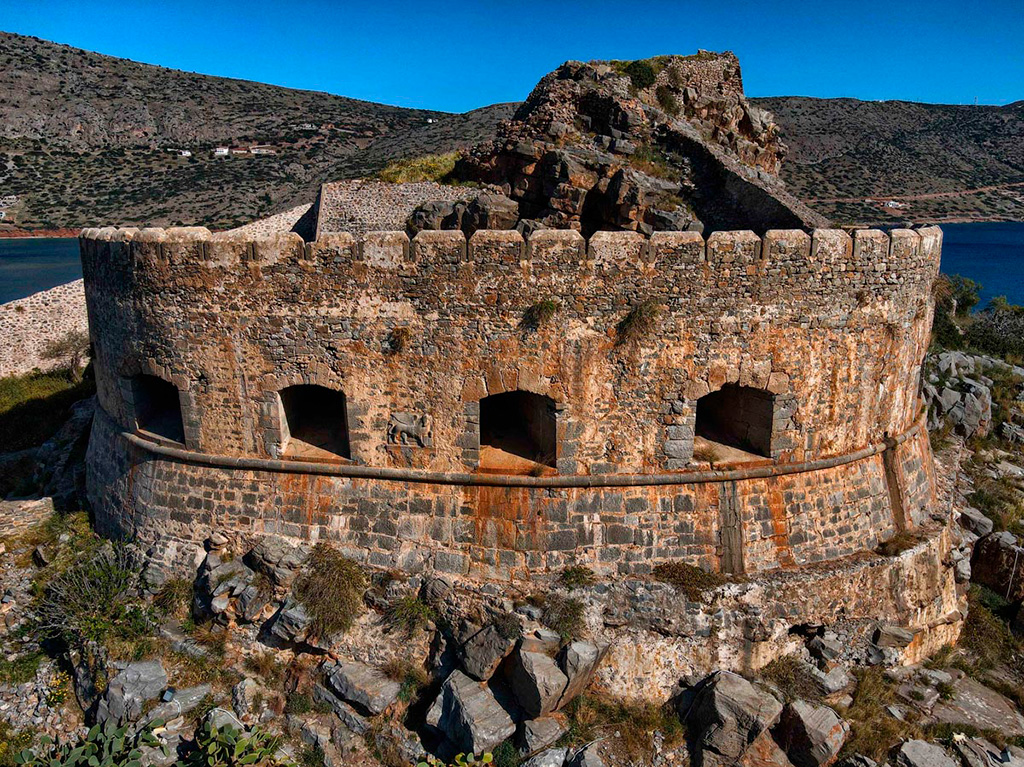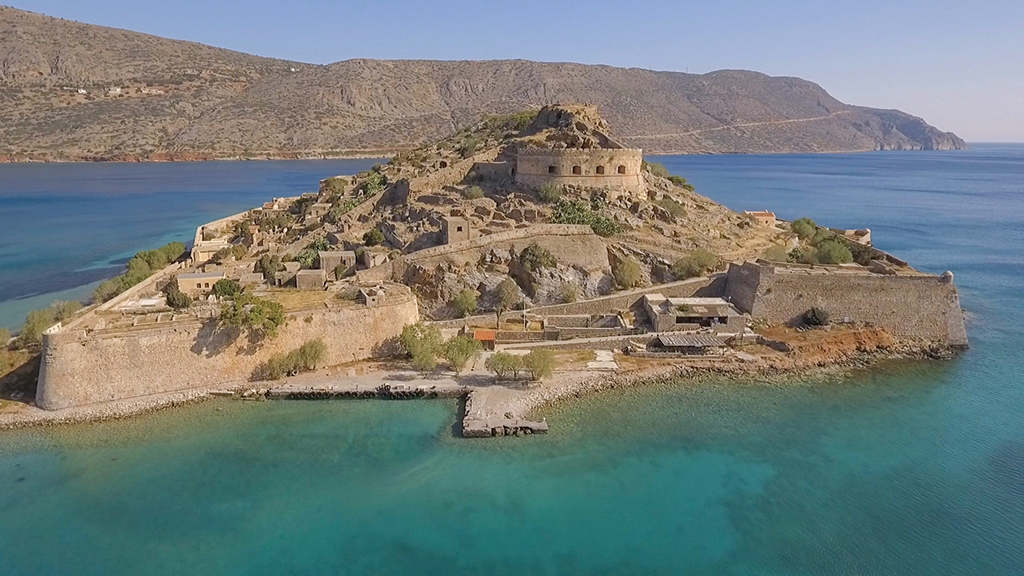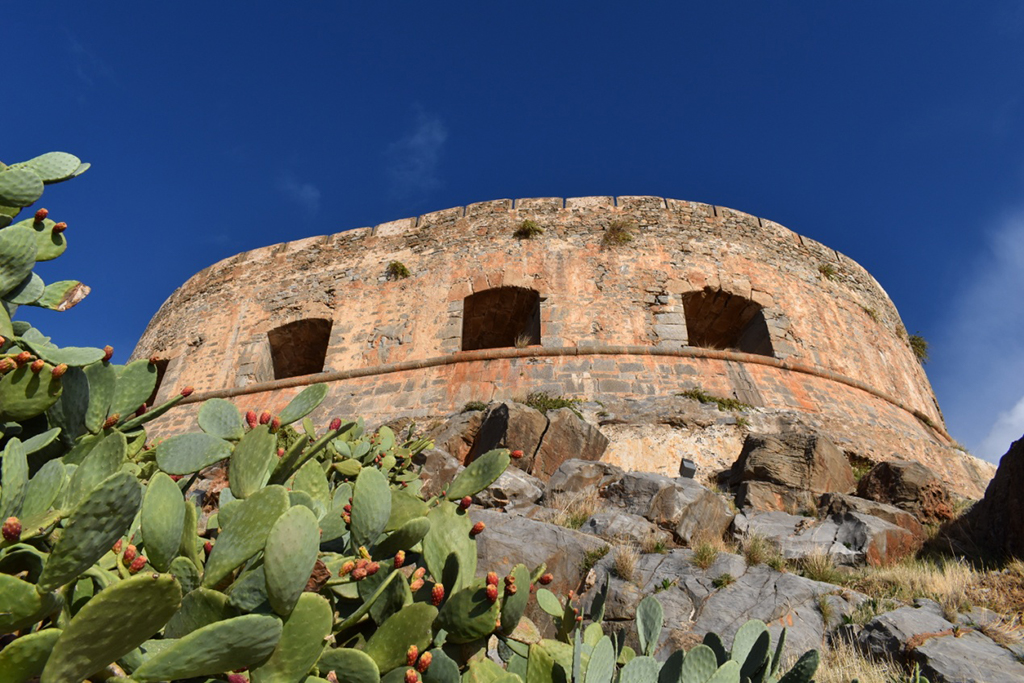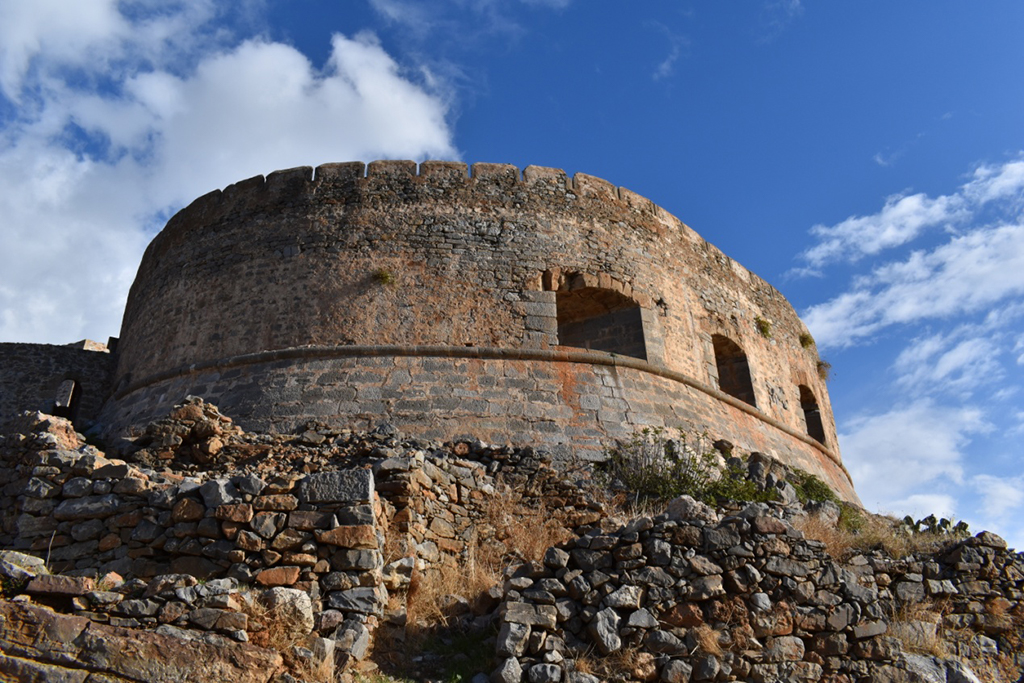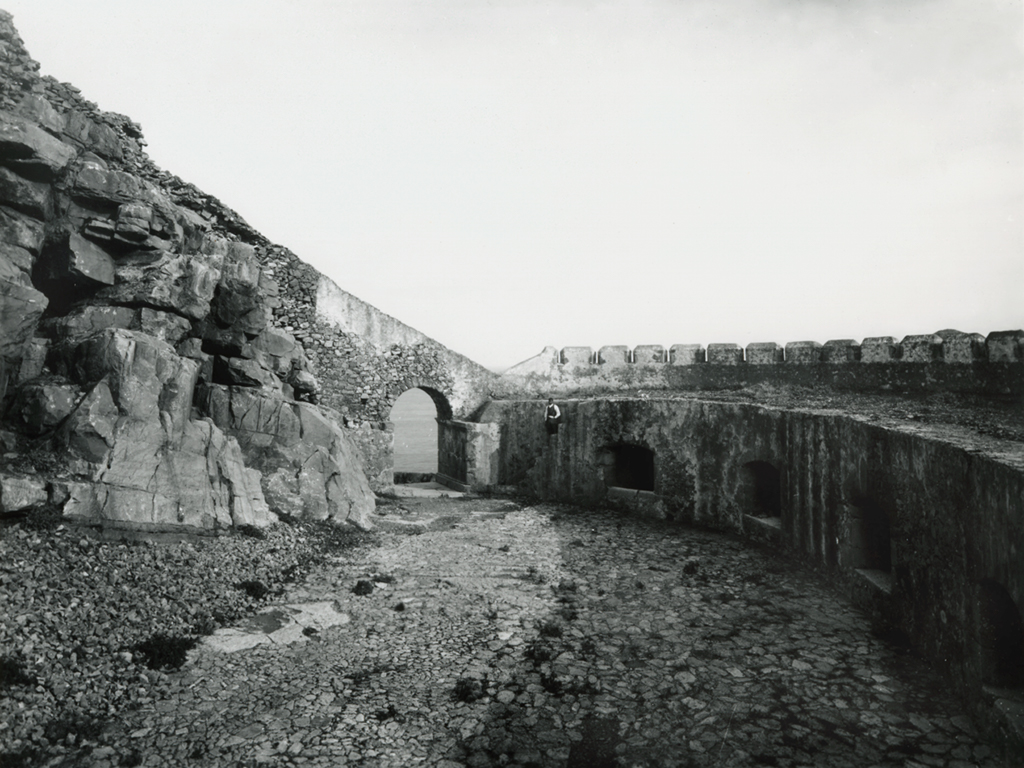Barbariga, Moceniga, or Veniera demi-lune
To protect the southern front of the fortress in case of an invasion from the opposing hill of the Kolokytha Peninsula, the Venetians construct a fortification in the shape of a demi-lune (mezzaluna). It was named Barbariga in honour of the first Provisioner of the fortress, Agostino Barbarigo, but it is also known by the names of two other Venetian officials: Zuanne Mocenigo, the General Provisioner of the Kingdom of Crete, who lays the foundation stone in 1581, and Lorenzo Venier, the Provisioner of the fortress who supervises its construction.
This is a monument of monumental proportions and a fine construction. The demi-lune has a solid body of stone and earth covered externally with limestone. Within its thickness, five arched cannon ports are opened. Four of them face the Kolokytha hill, while the one on the eastern edge faces the mouth of the harbour. The upper part, where the 33 battlements are located, was probably constructed later. Externally, it bears a relief plaque depicting the symbol of Venice, the winged Lion of St. Mark, and an inscription, not visible today, with the name of its founder, Mocenigo, while below it, three destroyed coats of arms can be distinguished.


